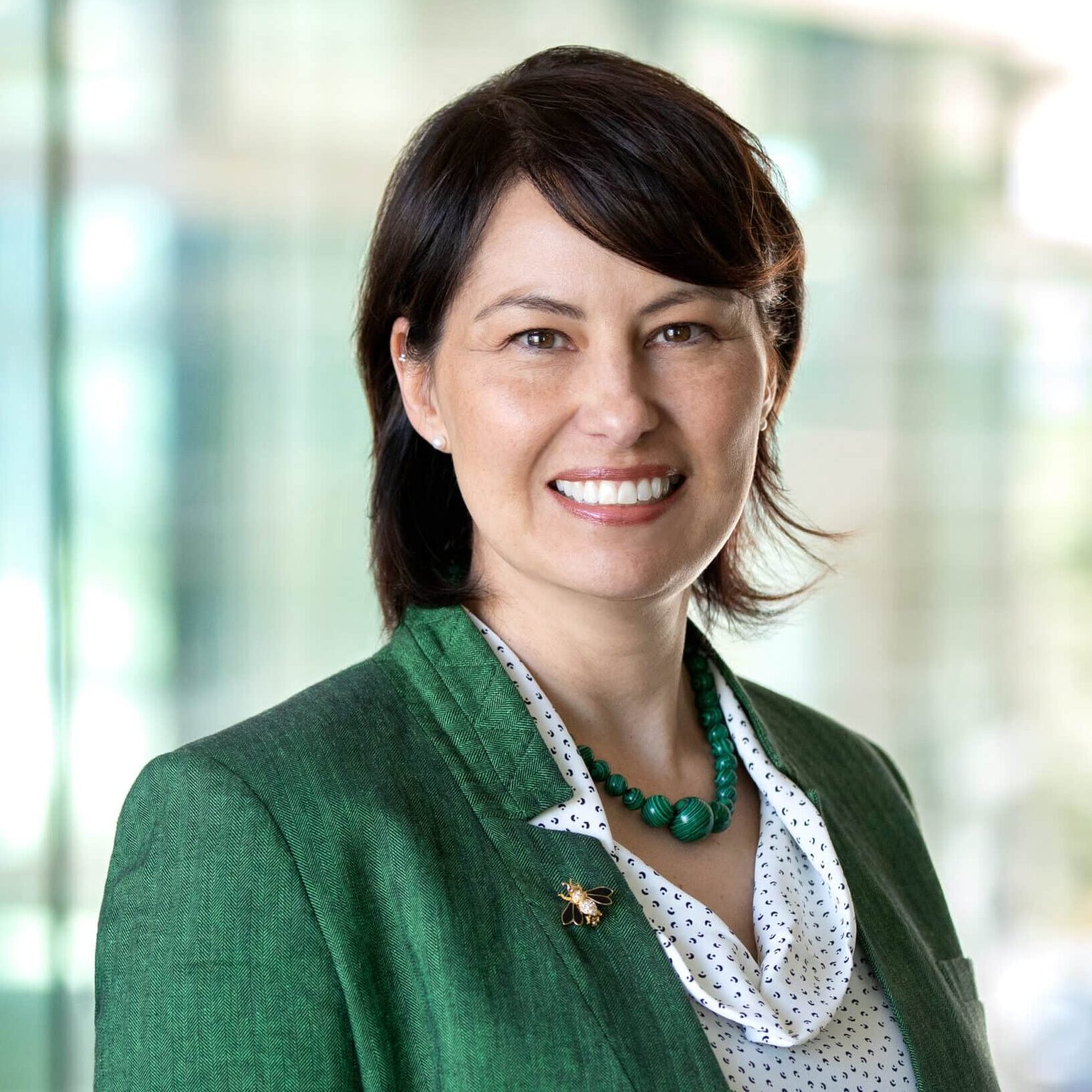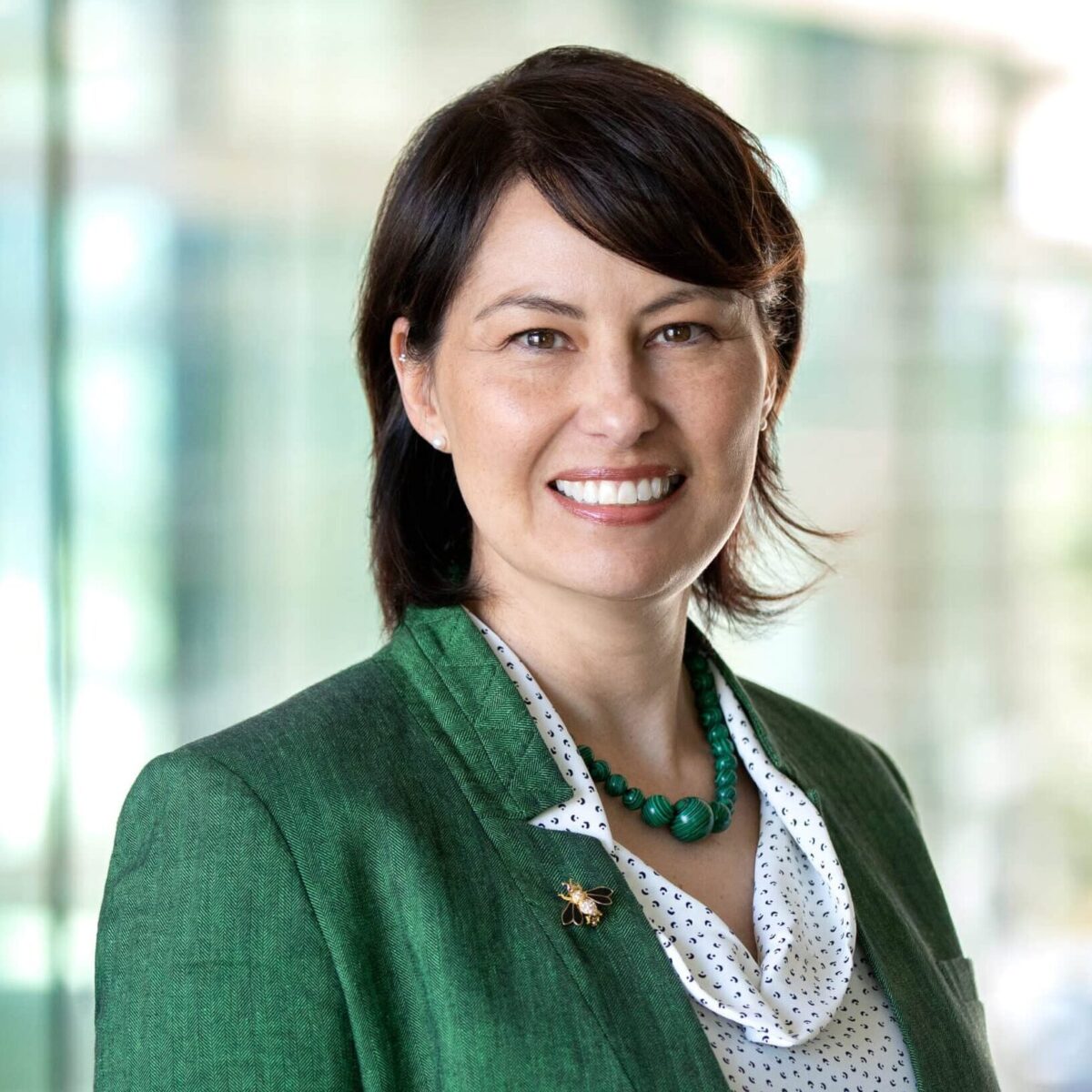Diversity is core to Bay Area-based biotech firm Genentech—not just in the makeup of its predominantly female workforce but also in the design of the organization itself. Genentech, founded nearly 50 years ago and considered the world’s first biotech company, develops and produces medicines to treat life-threatening illnesses; it’s the maker of breakthrough products for conditions including cancer and multiple sclerosis.
That work is driven by the 13,500 people who work across a diverse range of jobs—from researchers and scientists to manufacturing professionals, lawyers, government affairs experts and more.
While the breadth of the organization presents an inherent HR challenge, says Chief People Officer Cori Davis, the diversity of Genentech’s talent—whom she says are collectively driven by its mission—contributes to a collaborative, innovative culture.
“It’s interesting from a cultural standpoint because—while [these specialties] all certainly have their own microcultures—overall, we all share the same mission around doing great work and breakthrough science for patients,” Davis says. “We need all of these functions to come together, so we have to look at things from end to end, from development to delivery.”
To support a diverse workforce, Davis adds, the organization also has leaned into employee listening—giving the workforce a voice in business strategies, including return-to-office and benefits offerings, such as a new menopause support benefit.
Davis recently shared with HRE how Genentech is leveraging benefits and other HR focuses to create an engaged, innovative workforce of the future.
HRE: Given the nature of the work Genentech does, how have you handled return-to-office?
 Davis: There are certainly people who have to be on site—for instance, in our manufacturing facilities, research labs; they’re just less flexible based on the job. But in general, we recognize the importance of having flexibility, while at the same time seeing the importance of coming together and interacting to innovate, be creative and be thought partners with one another.
Davis: There are certainly people who have to be on site—for instance, in our manufacturing facilities, research labs; they’re just less flexible based on the job. But in general, we recognize the importance of having flexibility, while at the same time seeing the importance of coming together and interacting to innovate, be creative and be thought partners with one another.
What we decided is that we want people on campus the majority of the time, but every team could have different arrangements that specify what that looks like for them. Some groups are three days a week and we have other groups who come in on a monthly basis. We have other options like flexible hours, of course, and then we have some groups who have anchor days—where they need to be together on campus on certain days. There’s no one-size-fits-all approach.
HRE: What are some of the retention challenges Genentech has seen in recent years, and how have you confronted them?
Davis: It’s a very competitive industry, and we have a lot of biotech companies literally right next door. Some of these roles we staff are really niche so, when we’re looking for talent, we have to keep an eye toward who has amazing tech skills, great collaboration skills, who are the people who can bring diversity into our organization and, most importantly, who is committed to our mission.
And we’re competing for some of the best people with other really great companies so we have to make sure that, for one, people have really interesting work to do. Above and beyond benefits and pay—which, of course, we’re extremely competitive with—if people aren’t interested in the work they’re doing and don’t feel that they’re continuously learning and having an impact that matters, there’s no amount of money or benefits in the world that would keep them.
So, we’re really focused on our work and making sure it’s valuable. We’re known for our innovation, for our amazing science. One of the things that comes out on our employee surveys is that the No. 1 reason people stay is because of the people that they work with and, for me personally, that’s certainly true. We work with amazing people and we get to learn together every day, so when you work with other professionals like that, it ups the game.
Then, of course, we do have a lot of benefits that help people in their personal lives. We have on-site benefits for those who are campus-based—everything from a medical clinic to a childcare center. We have benefits for pretty much every stage of life.
HRE: Speaking of, I saw that you recently launched a menopause benefit program.
Davis: I’m so excited about this one. Our Genentech Women Professionals, one of our DNA Groups [Diversity Network Associations, of which Genentech has 15], mentioned this and we realized that, if it’s a question, maybe it’s something we should look into.
So, we worked with our benefits team and, sure enough, found some really great options out there to incorporate menopause benefits into our portfolio without a high-cost impact. We have a digital health platform that includes 24/7 virtual support and on-demand video appointments with clinicians. There are classes and you can get referrals for in-person providers. It all ties up nicely with our medical benefits; employees can talk to specialists about menopause but if they need medical assistance, it kicks right over into the medical part of it.
Related: Menopause: The next big benefits trend?
Unlike some of the other companies in the Bay Area, particularly tech companies, we have an older average age: 45. And 54% of our employees are women. So, there’s a pretty good chance women will be going through menopause during their employment. We used this data to think about what’s the best approach and this seemed like something really important to do, and something we could be an early adopter of. We’ve had around 500-550 participants since March, and this is a benefit that is available to employees as well as employees’ partners and spouses.
I’m really happy because it normalizes menopause. For something that half the world’s population goes through in life, menopause is still something we don’t talk about openly—in the workplace or otherwise. It reminds me of how mental health used to be; there’s a stigma to it. And now it’s becoming something we talk about regularly in the course of life and work.
HRE: How is Genentech looking to technology to power your people strategy moving forward?
Davis: This is one really exciting space, and I think we’re going to continue to see emerging technology and new ways of using data. In my experience, historically, getting our hands on relevant people data isn’t always easy; it’s not like in commercial areas, where you have revenue and sales that can readily get their hands on data to help make decisions. One of the areas I think that’s really helping us to think about how we can leverage data is in the benefits space. We’re looking at data from healthcare claims, mental health utilization, 401(k) plan contributions—as well as qualitative employee feedback—to really identify and address unmet needs among our employee populations. We’re looking at that holistically and using it for data-based decision-making in thinking about what we take off the plate in terms of offerings and, importantly, what we need to add.
HRE: What was the skill that most benefitted you as an HR leader in 2023?
Davis: I would say agility, which probably isn’t just exclusive to HR. Change is the new constant. I felt like there were things we could predict throughout the year and a lot we couldn’t, both internally and externally. We’re going through changes within our organization, which is large and complex with a lot of variety of groups, all with different needs. And, of course, we’re continuing to see a lot impacting our people from outside of work.
So, I think it’s just being ready to think about what is most important at the time, how we can address it, what we can do proactively—but also make sure we’re embracing things in a thoughtful way as they come up. The thing I love about our organization is that it has such variety in it, every day is a new day. So, I’ve certainly had to really practice my mental agility and learn to think through things the right way.
HRE: How can HR keep workforce wellbeing strong in 2024, despite ongoing change?
Davis: The pandemic brought more of a laser focus here than we had before. But I think what we’ve been finding is [mental health struggles] weren’t just a pandemic thing. There are things impacting people outside of work every day, and ongoing support for mental health is something we need to continue to bolster. We don’t see anything different going into 2024 and beyond.
What’s great is that we’re starting to see different types of offerings here. We’ve gone really deep on this one and offer support at every stage of the mental health continuum—preventative care, early intervention, ongoing talk and text therapy, medical management. With our medical plan, we have a dedicated team of licensed mental health clinicians, who provide one-on-one support to employees and their families, and we also have our EAP that provides up to 25 sessions with a mental health counselor per year at no cost to the employee, and also to their family members, which is a pretty big benefit.
We also have a Mental Health Champions network across the organization of over 400 employee volunteers; we’re finding this is such a passionate topic for so many people and they want to contribute to this space, even if they’re not experts. They can help us keep a pulse on the needs of the organization and how we can further support our employees.
HRE: Outside of work, where do you invest most of your energy?
Davis: I’m very focused on my family. My parents are still with us, so every chance I get, we visit quite a bit, as well as with my two sisters, one of whom has kids; I love visiting my nieces and the rest of my family. I try to focus on my family and draw boundaries so I can be present there and my head isn’t still half in work.
Join HRE in Las Vegas this spring for our Elevate People, Ignite Change (EPIC) conference, where you can learn from experts and practitioners about using innovation and transformation to positively influence your people strategies.
The post How the world’s first biotech firm is innovating in benefits, employee wellbeing appeared first on HR Executive.
